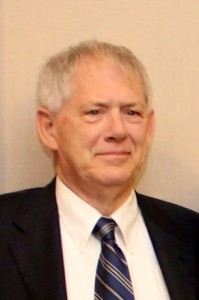AARC Board of Directors Honors James H. Lesar with an Unprecedented Appointment
“An every day American hero, Jim Lesar is a legal legend.”
* * * * * * *
AARC founder, Jim Lesar’s letter of 16 October, 2000 to the Journal of American History
Editorial Office
Journal of American History
To the Editor:
For five years I represented James Earl Ray, the alleged assassin of Dr. Martin Luther King, Jr., in his attempts to get a trial. I was the attorney principally responsible for presenting the evidence at the two-week long evidentiary hearing on his peti-tion for a writ of habeas corpus that was held in 1974. I also represented author Harold Weisberg in his 1976 Freedom of Information Act lawsuit which resulted in the public release of some 60,000 pages from the FBI’s MURKIN file (“MURKIN”) being the FBI’s acronym for its “murder of King” investigation.
Ralph E. Luker’s review of Gerald Posner’s Killing the Dream: James Earl Ray and the Assassination of Dr. Martin Luther King. Jr. is deeply flawed. As a result, Professor David Wrone took vigorous exception to the review and, in a letter which you printed, pointed to some of the evidence which indicates that Ray was not Dr. King’s assassin, and that there was a conspiracy to murder him. Mr. Luker’s reply, which you also printed, ignores the evidentiary questions raised by Prof. Wrone and resorts to gg hominem attacks. In his most egregious and reckless charge, Luker likens Wrone and “conspiracy theorists” to those who deny the Holocaust. Knowing Prof. Wrone as I do, I am sure that he finds this charge outrageously offensive.
Nor is it offensive just to Prof. Wrone and “conspiracy theorists.” Most Americans believe that Dr. King was killed as a result of a conspiracy, and an overwhelming percentage of blacks do. In 1979 a Congressional committee found that there was a very high probability that there had been a conspiracy to kill Dr. King. Are they all to be dismissed as wretched “Holocaust deniers?
Mr. Luker says that it II is worse than misleading” to claim, as Prof. Wrone did, that “Ray was exonerated in a 1974 trial.” He wants to know why, if Ray was exonerated, “he remain[ed] in prison until his death?” This sounds logical but actually betrays an unawareness of the history of the Ray case that is especially dismaying when it is found to inhere in the mind of a reviewer of a book on the King assassination.
As noted above, in 1974 a federal court held a two-week evidentiary hearing, which is a kind of a trial and is sometimes referred to as such. The evidence which Ray presented was subject to cross-examination, and in the view of Prof. Wrone and others who have reviewed the transcript, presented such clear evidence that the crime could not have been committed by Ray that he was, in effect, exonerated. Unfortunately, the trial judge considered that the central issue was whether Ray’s 1969 guilty plea was voluntary or not, thus evidence bearing on guilt or evidence or whether there was a conspiracy was irrelevant. That is why Ray remained in prison all his life despite evidence that the shot which killed Dr. King was not fired from the the alleged murder weapon, nor was it from the bathroom window by Ray–or anyone else–as claimed.
The root problem with Luker’s review is that Posner’s book affords no basis for a reviewer not intimately familiar with the complicated circumstances of the crime scene evidence to evaluate questions of whether Ray was a conspirator, a patsy, or killed King all by himself. Regardless of where one stands on these issues, a serious book on the subject would necessarily have to discuss at length Ray’s 1974 evidentiary hearing. It was, after all, the only time in the three-decades history of the case that evidence was tested by cross-examination. As Posner did not do this, it is not surprising that Luker would be insufficiently versed in it to be able to critically evaluate Posner’s book.
Luker praises Killing the Dreamer as an “exceptionally careful, fully documented … study of the assassination of Martin Luther King, Jr.”
Even a quick glance at Posner’s sources shows that this claim is risible. Posner repeatedly cites “MURKIN” as his source. But the MURKIN files are gargantuan. It’s as if a Shakespearean scholar writing a controversial thesis about the bard had been praised for his careful and fully documented scholarship when his footnotes repeatedly referenced only “The Complete Works of William Shakespeare” as his source. Posner’s lack of proper source citation undermines his claim, such as it is, to be taken seriously as an historian.
Finally, I note Luker’s assertion that “Wrone, Weisberg and the conspiracy theorists have yet to offer any evidence that government agencies conspired to assassinate [Dr.] King.” (His emphasis) Since neither Weisberg nor Wrone has ever made such a claim, this is a straw man and a vile canard.
Sincerely yours,
James H. Lesar
Lesar Letter to Journal Of American HIST. 161000(1)
*************************************************************************************************
WARREN COMMISSION EXPERTS REVEAL SECRETS OF JFK MURDER AND COVER-UP AT 50TH ANNIVERSARY CONFERENCE
Those who watch the videos of the conference, and/or purchase DVD sets containing the 44 conference presentations, are urged to further aid and support AARC actions to extricate the remaining records — tens or hundreds of thousands of them — that remain hidden and unreleased. Please support AARC efforts to free them by making a tax-exempt charitable contribution to: AARC.
*************************************************************************************************


